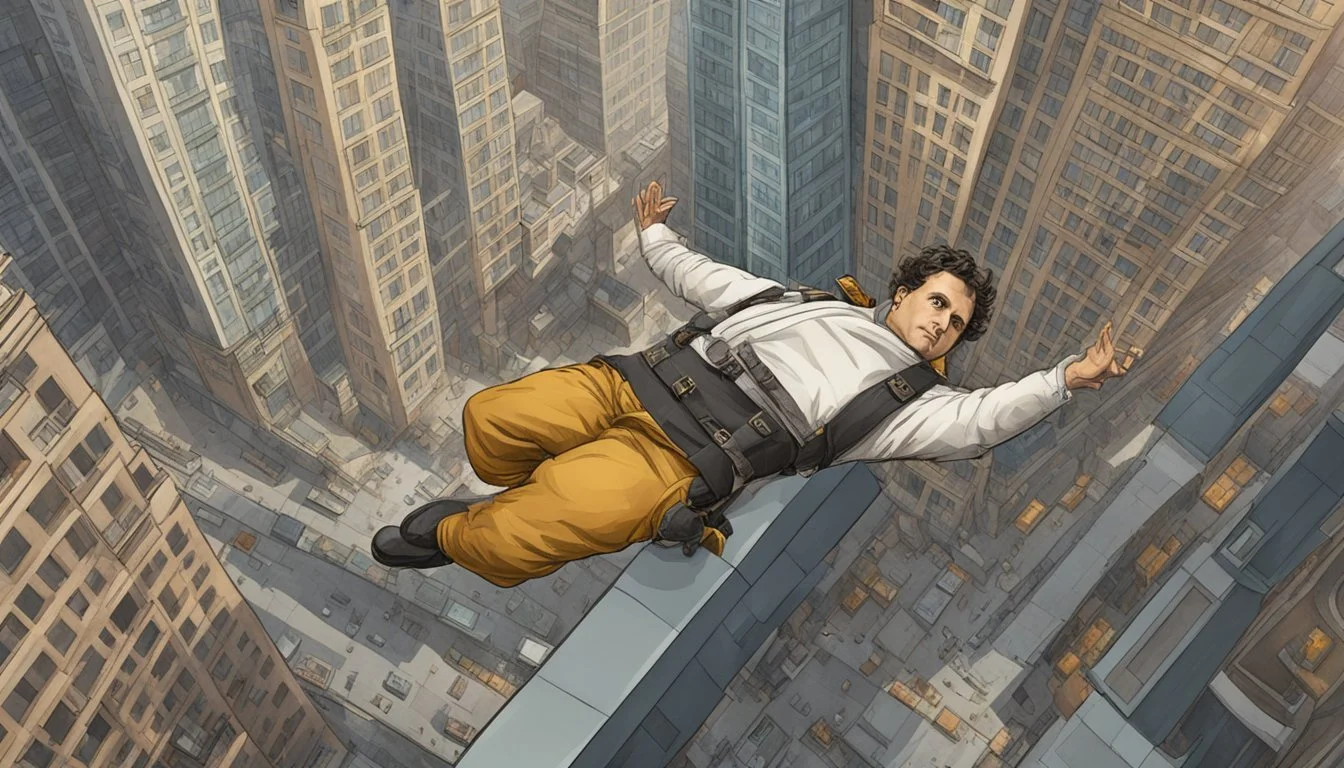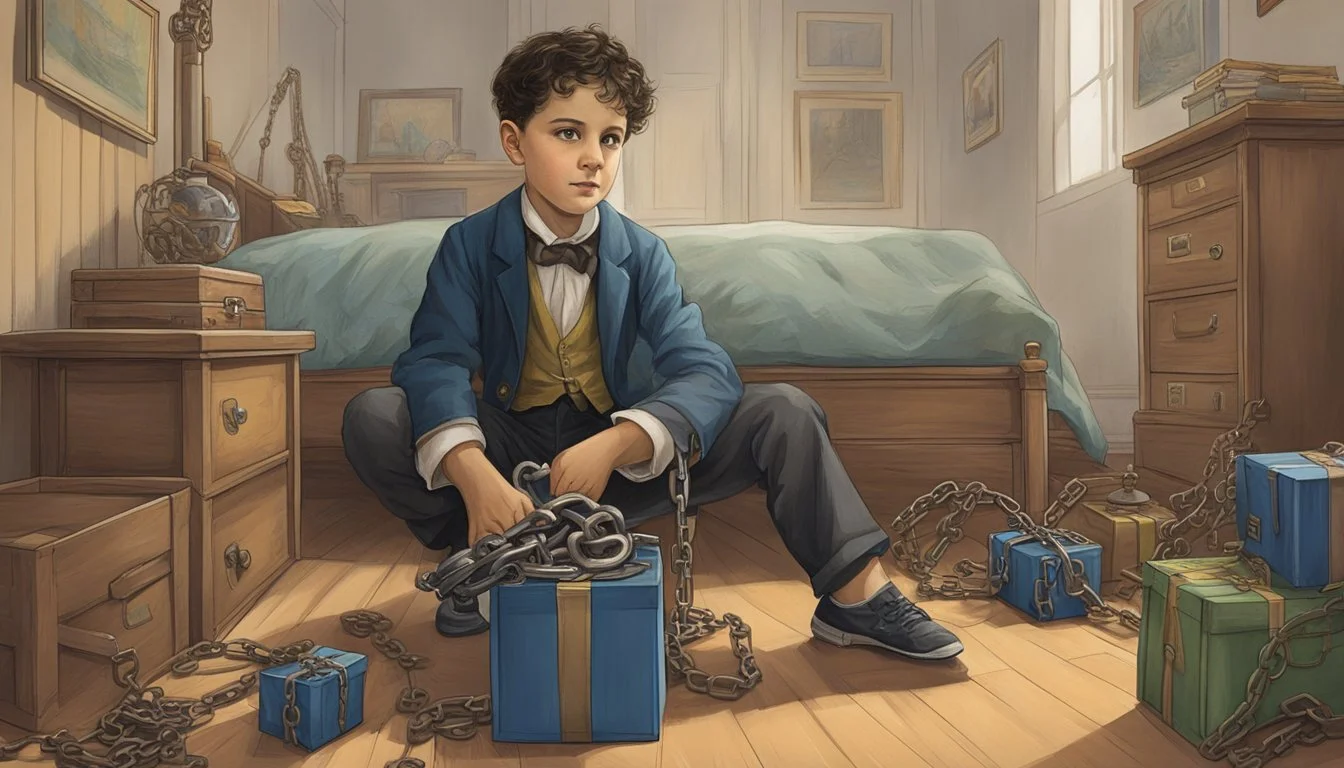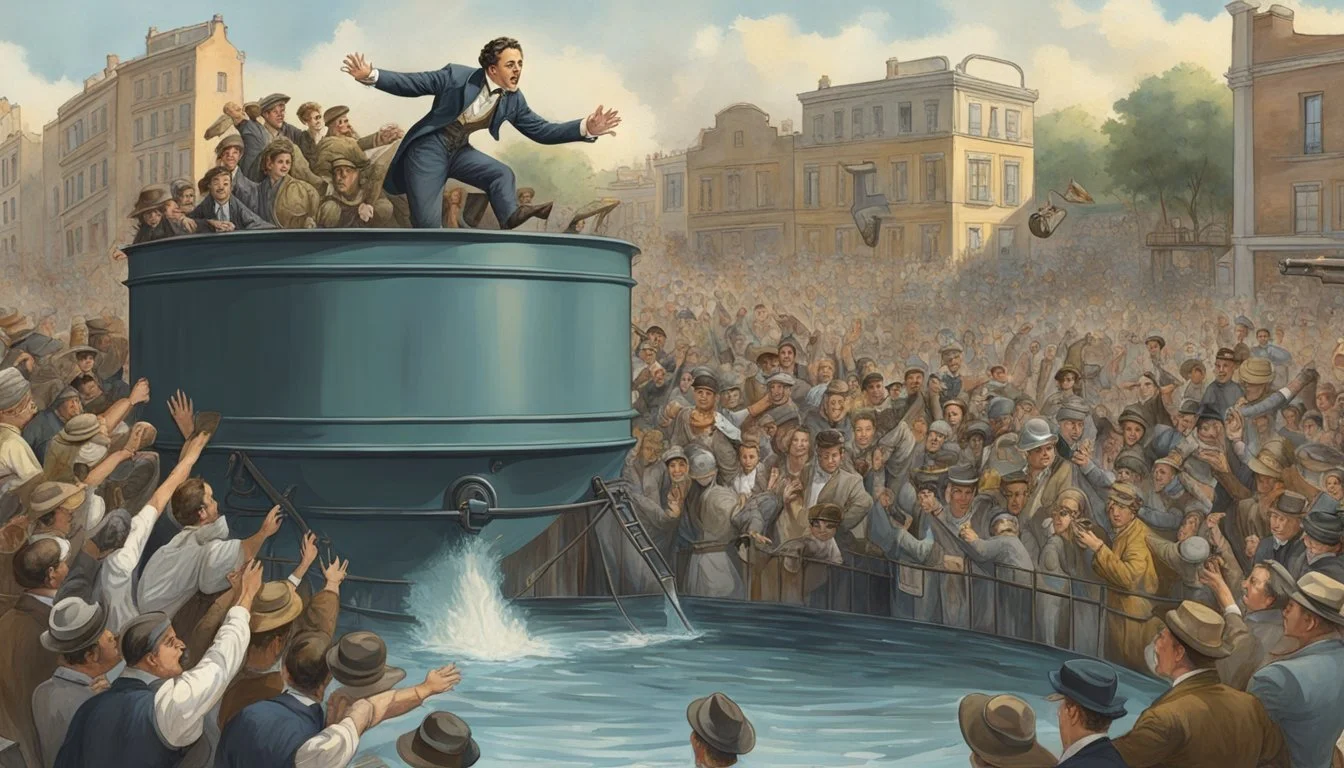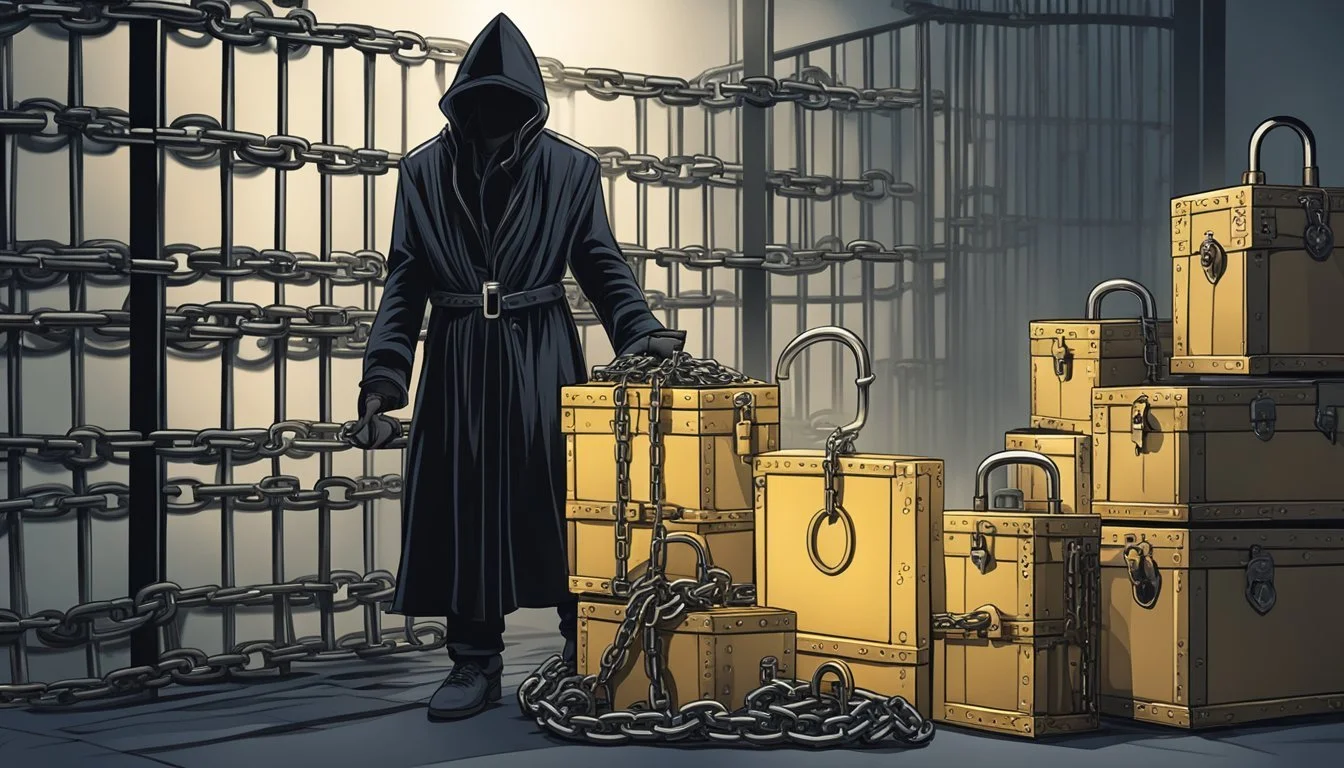Houdini: The Man Behind the Magic
Secrets of the Great Escape Artist Revealed in New Biography
Harry Houdini captivated audiences worldwide with his seemingly impossible escapes and illusions. Born Erik Weisz in 1874, he transformed himself into one of the most famous magicians and escape artists in history. Houdini's unparalleled skill in freeing himself from handcuffs, straitjackets, and even water-filled tanks made him a legend in the entertainment world.
Houdini's performances went beyond mere tricks. He challenged police forces to keep him restrained, turning his acts into public spectacles that drew massive crowds. His ability to escape from any confinement, whether on stage or in impromptu demonstrations, left spectators in awe and cemented his reputation as the "Handcuff King."
The secrets behind Houdini's escapes were a combination of physical prowess, meticulous preparation, and deep understanding of locks and restraints. He studied various knots and locking mechanisms, developing techniques to manipulate them with hidden tools or sheer physical dexterity. Houdini's legacy as an escape artist continues to inspire and mystify, long after his untimely death in 1926.
Early Life and Background
Harry Houdini's journey from humble beginnings to international stardom was shaped by his immigrant roots and early exposure to magic. His upbringing laid the foundation for his future career as a legendary escape artist and illusionist.
Birth in Budapest
Ehrich Weisz, later known as Harry Houdini, was born on March 24, 1874, in Budapest, Hungary. He was the fourth child in a Jewish family of seven children. His father, Mayer Samuel Weiss, worked as a rabbinical lawyer and sometimes soap maker. Ehrich's mother, Cecelia Steiner, raised the large family.
The Weisz family faced economic challenges in Hungary, prompting their decision to seek better opportunities abroad.
Immigration to America
In 1878, when Ehrich was four years old, the Weisz family immigrated to the United States. They settled in Appleton, Wisconsin, where Mayer became a rabbi for the local Jewish congregation.
The family's surname was changed to Weiss upon arrival. Young Ehrich adopted the name "Erik" as his American moniker. The move to America marked a significant turning point in Ehrich's life, exposing him to new cultural experiences and opportunities.
Introduction to Magic
Ehrich's fascination with magic began at an early age. At 9, he started performing trapeze acts and called himself "Ehrich, the Prince of the Air." His interest in magic grew when he moved to New York City as a teenager.
In New York, Ehrich worked various jobs to support his family. He discovered a book on magic by the famous French magician Jean Eugène Robert-Houdin. This book sparked his passion for illusions and escape acts.
Ehrich began practicing card tricks and small magic routines. He performed at local dime museums and sideshows, honing his skills and developing his stage presence. These early experiences laid the groundwork for his future career as Harry Houdini, the world-renowned escape artist.
Rise to Fame
Harry Houdini's journey to stardom began with humble roots and culminated in worldwide renown. His career trajectory saw rapid growth as he honed his skills and developed his signature escapes.
The Brothers Houdini
Harry and his brother Theodor initially performed together as "The Brothers Houdini" at Coney Island in 1893. Their act focused on card tricks and traditional magic routines. Harry billed himself as the "King of Cards," showcasing his dexterity with sleight-of-hand illusions.
The duo's performances caught the attention of vaudeville promoters, leading to small-time bookings. However, their partnership was short-lived. Theodor left the act, prompting Harry to seek a new direction for his career.
Becoming Harry Houdini
After his brother's departure, Harry adopted the stage name "Harry Houdini" in honor of the French magician Jean Eugène Robert-Houdin. This marked a turning point in his career, as he began to focus on escape acts.
Houdini's wife, Bess, joined him as his stage assistant. Together, they developed a mind-reading act that gained popularity in vaudeville circuits. Houdini's charisma and showmanship quickly set him apart from other performers.
His breakthrough came when he challenged police stations to restrain him. These publicity stunts garnered significant press coverage and established his reputation as the "Handcuff King."
Signature Escapes
Houdini's fame skyrocketed with the introduction of increasingly daring escapes:
Handcuff Escape: He could free himself from any pair of handcuffs in minutes.
Straitjacket Escape: Houdini performed this while suspended upside down from tall buildings.
Milk Can Escape: He escaped from a padlocked milk can filled with water.
Chinese Water Torture Cell: His most famous feat involved escaping from a water-filled tank while hanging upside down.
These spectacular stunts captivated audiences worldwide. Houdini's ability to generate publicity and his unwavering commitment to his craft solidified his status as the world's greatest escape artist.
Life as an Escape Artist
Harry Houdini revolutionized the art of escape through innovative techniques, daring public spectacles, and international tours that captivated audiences worldwide. His mastery of locks, chains, and restraints earned him fame as the "Handcuff King" and premier escape artist of his era.
Innovative Techniques
Houdini developed groundbreaking methods to escape seemingly impossible restraints. He mastered lock picking and contortion skills to free himself from handcuffs and straitjackets. His signature move involved dislocating his shoulders to slip out of restraints.
Houdini invented specialized tools hidden in his clothes or body to aid escapes. He used lockpicks concealed in his hair and small keys hidden under his tongue or in hollowed-out shoe heels.
His meticulous preparation involved studying locks and restraints to find weaknesses. Houdini often requested to examine equipment before performances to devise escape strategies.
Public Spectacles and Challenges
Houdini's escapes became grand public events that drew massive crowds. He performed suspended upside-down from skyscrapers while escaping straitjackets. In his famous Chinese Water Torture Cell escape, he was lowered upside-down into a locked glass tank filled with water.
To prove his skills, Houdini challenged police departments worldwide to restrain him. He escaped from handcuffs, leg irons, and jail cells provided by law enforcement.
In 1904, Houdini accepted the Daily Mirror newspaper's challenge in London. He escaped from a special set of handcuffs that took a locksmith five years to make, cementing his reputation.
International Acclaim and Tours
Houdini's fame spread globally through extensive international tours. He performed for royalty and heads of state across Europe, captivating aristocratic audiences with his daring escapes.
His act evolved to include exposing fraudulent spiritualists and debunking paranormal claims. This expanded Houdini's appeal beyond magic circles to scientific and skeptic communities.
Houdini's international tours helped establish escape artistry as a respected form of entertainment. His influence inspired generations of magicians and popularized escapology as an enduring genre of performance art.
Not Just an Illusionist
Harry Houdini's talents extended far beyond his famous escapes and illusions. He explored diverse fields, embracing new technologies and artistic mediums of his era.
Houdini the Aviator
In 1909, Houdini became fascinated with aviation. He purchased a Voisin biplane and learned to fly in Germany. On March 16, 1910, he made history by completing the first controlled powered flight in Australia.
Houdini's aviation pursuits were short-lived but intense. He performed aerial stunts and took part in flying competitions. His love for flying reflected his daring spirit and desire to conquer new challenges.
Ventures in the Film Industry
Houdini recognized the potential of motion pictures early on. In 1918, he established the Houdini Picture Corporation. He starred in several films, including "The Grim Game" (1919) and "Terror Island" (1920).
These films showcased Houdini's escape artistry and death-defying stunts. While not critically acclaimed, they allowed him to reach wider audiences. Houdini's foray into cinema demonstrated his adaptability to new entertainment mediums.
Life Beyond Magic
Houdini's interests were vast and varied. He served as president of the Society of American Magicians from 1917 until his death in 1926. In this role, he worked to elevate the status of magicians and protect their intellectual property.
He was also an avid collector of books on magic and spiritualism. His library grew to over 5,000 volumes. Houdini's passion for debunking fraudulent mediums became a significant part of his later career.
He wrote books exposing spiritualist tricks and testified before Congress against fortune-telling in Washington, D.C. These endeavors showcased Houdini's commitment to truth and his analytical mind.
Houdini's Fight Against Spiritualism
Harry Houdini, renowned escape artist and illusionist, dedicated significant efforts to debunking spiritualist claims. His crusade against mediums and séances stemmed from his expertise in deception and illusions.
Exposing Frauds
Houdini actively exposed fraudulent mediums and their deceptive practices. He attended séances incognito, using his knowledge of magic to detect trickery. The magician famously debunked Mina Crandon, known as "Margery," by catching her using her foot to manipulate objects during séances.
Houdini also collaborated with Scientific American magazine, offering a cash prize to any medium who could prove their supernatural abilities. This challenge remained unmet, further discrediting spiritualist claims.
To educate the public, Houdini staged demonstrations revealing common spiritualist tricks. He recreated "spirit photographs," showing how easily these images could be manipulated.
Advocating for Rationalism
Beyond exposing individual frauds, Houdini championed critical thinking and scientific skepticism. He gave lectures and wrote books detailing the methods used by fake mediums, empowering audiences to spot deception themselves.
Houdini's efforts extended to lobbying for stricter laws against fraudulent mediums. He testified before Congress, pushing for legislation to protect the public from exploitation by those claiming supernatural abilities.
The magician's stance put him at odds with some contemporaries, including Sir Arthur Conan Doyle, a staunch spiritualist believer. Their public disagreements highlighted the tension between faith and skepticism in early 20th-century society.
Legacy and Death
Harry Houdini's final days and enduring impact left an indelible mark on magic and popular culture. His dramatic end and lasting influence continue to captivate audiences nearly a century after his passing.
The Final Acts
Houdini's last performance took place in Detroit on October 24, 1926. Despite suffering from acute appendicitis, he pressed on with the show. Backstage, a student asked if Houdini could withstand a punch to the stomach. The magician agreed, but before he could brace himself, the student struck.
Houdini's condition worsened, and he was hospitalized in Detroit. He died on October 31, 1926 - Halloween - at the age of 52. His official cause of death was peritonitis from a ruptured appendix.
Before his death, Houdini and his wife Bess agreed on a secret code: "Rosabelle believe." This phrase was meant to be used if Houdini could communicate from beyond the grave.
Influence and Remembrance
Houdini's legacy extends far beyond his death. He remains the most famous magician in history, inspiring generations of performers. His name has become synonymous with seemingly impossible escapes and feats of endurance.
The Society of American Magicians, which Houdini led for years, continues to honor him. They hold a yearly séance on Halloween, attempting to contact his spirit.
Houdini's grave in Queens, New York, became a pilgrimage site for magicians and fans. His collection of magic books and artifacts formed the basis for one of the world's largest magic libraries at the Library of Congress.
His life story has been adapted into numerous books, films, and television shows, ensuring his place in popular culture for decades to come.
Houdini in Popular Culture
Harry Houdini's legacy extends far beyond his lifetime, permeating various aspects of popular culture. His name has become synonymous with escape artistry and magic.
Films have frequently depicted Houdini's life and feats. Notable examples include "Houdini" (1953) starring Tony Curtis and "Death Defying Acts" (2007) with Guy Pearce.
In literature, Houdini appears as a character in numerous works of fiction. Authors have reimagined him solving mysteries or battling supernatural forces.
Television shows often reference Houdini when featuring escape acts or illusionists. His techniques continue to inspire modern magicians and performers.
Houdini's influence reached Harlem during the 1920s, where he performed at theaters and inspired local entertainers. His shows drew diverse crowds, breaking racial barriers in show business.
Collectors eagerly seek Houdini memorabilia, including posters, handcuffs, and his personal newsletter "Conjurers' Monthly Magazine." These items fetch high prices at auctions.
Museums dedicated to magic often feature Houdini exhibits, showcasing his props and explaining his most famous illusions. These displays attract tourists and magic enthusiasts alike.
Houdini's name is used to market various products, from locks to puzzle games, capitalizing on his reputation for ingenuity and escape prowess.






